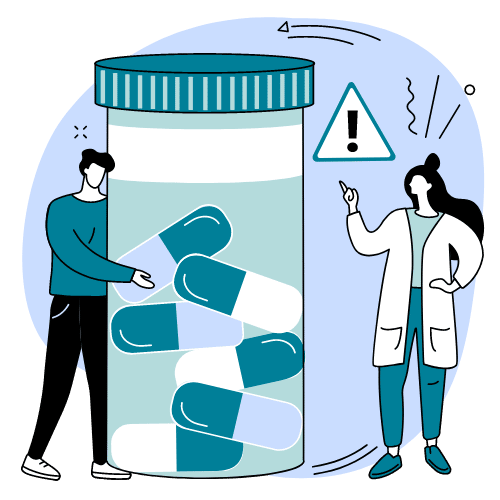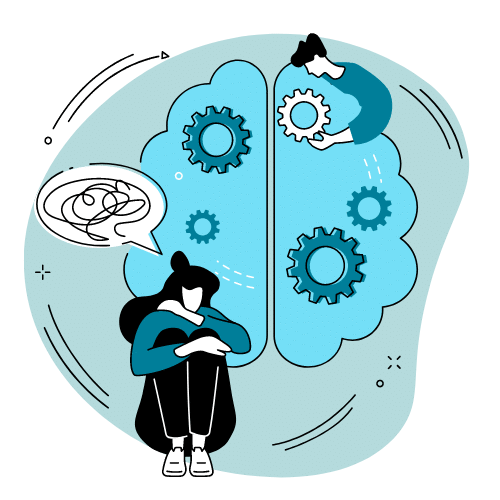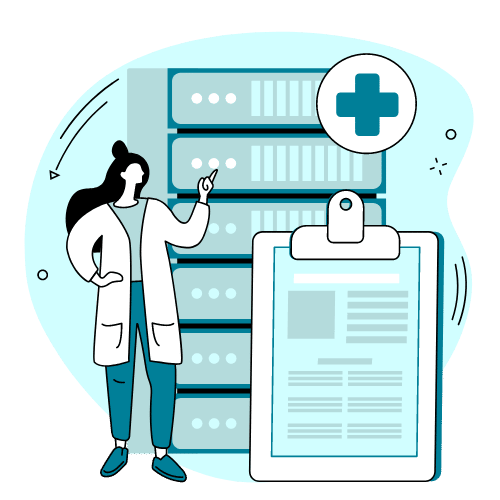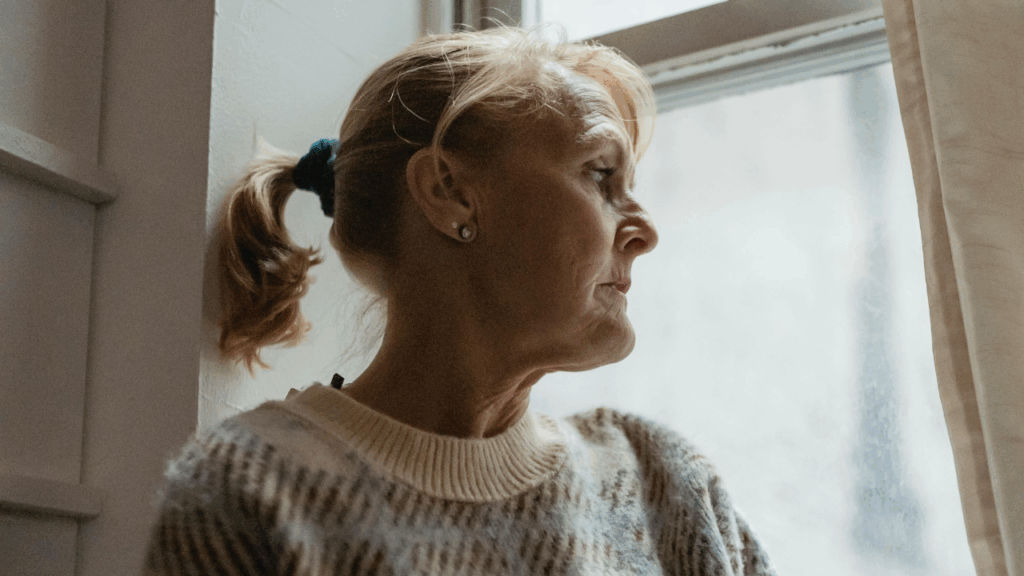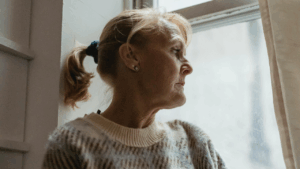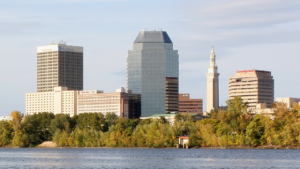As the days grow shorter and the New England winter settles over Western Massachusetts, many people experience more than just colder temperatures and early sunsets. For some individuals, the arrival of autumn and winter brings profound changes in mood, energy, and overall wellbeing—changes that extend far beyond the typical “winter blues.” This condition, known as Seasonal Affective Disorder (SAD), affects millions of Americans each year and carries a particular risk that’s often overlooked: a significantly increased vulnerability to substance abuse and addiction.
At Swift River, located in the heart of Western Massachusetts, we see firsthand how the long, dark winters of New England can impact both mental health and substance use patterns. Understanding the connection between seasonal depression and addiction is crucial for anyone struggling with either condition—and especially important for those dealing with both.
What Is Seasonal Affective Disorder?
Seasonal Affective Disorder is a type of major depressive disorder that follows a seasonal pattern. Formally recognized in the DSM-5 as “major depressive disorder with seasonal pattern,” SAD is far more than simply feeling down during the winter months. It represents a clinically significant form of depression that recurs predictably with the changing seasons.
Research indicates that approximately 6% of the U.S. population experiences SAD in its most marked form, while an additional 14% suffer from a milder version often called “winter blues” or subsyndromal SAD. The condition primarily affects people during fall and winter, though a small percentage experience summer-pattern SAD.
For those with winter-pattern SAD—by far the most common form—symptoms typically begin in late fall as daylight hours diminish and persist through winter, then remit in spring and summer as days lengthen again. To qualify for a SAD diagnosis, this seasonal pattern must occur for at least two consecutive years, with more depressive episodes occurring during specific seasons than during other times across the person’s lifetime.
Why Is SAD More Common in Northern Climates?
Geography matters significantly when it comes to SAD. Research has consistently demonstrated that prevalence rates increase at higher latitudes where winter days are shortest. A landmark study published in Psychiatry Research examined four different U.S. locations—Nashua, New Hampshire; New York, New York; Montgomery County, Maryland; and Sarasota, Florida—and found that rates of winter SAD and subsyndromal SAD were significantly higher in the more northern latitudes.
Here in Massachusetts, we experience approximately 9 hours and 5 minutes of daylight on the winter solstice, compared to over 15 hours at the summer solstice. This dramatic reduction in light exposure has profound effects on those vulnerable to SAD. Studies of college students in northern New England found higher prevalence rates of SAD compared to national averages, with students who had moved from southern locations to northern regions experiencing the greatest increases in winter depression.
The connection between latitude and SAD isn’t absolute—climate, genetic factors, and sociocultural context all play roles—but the correlation is clear enough that mental health professionals in northern states like Massachusetts remain particularly vigilant for SAD symptoms.
Understanding the Symptoms
SAD shares many symptoms with other forms of depression, but certain characteristics are especially pronounced:
Core depressive symptoms include:
- Persistent sad, anxious, or “empty” mood
- Loss of interest or pleasure in activities once enjoyed
- Feelings of hopelessness or pessimism
- Decreased energy and increased fatigue
- Difficulty concentrating and making decisions
- Changes in sleep patterns
Symptoms particularly common in winter-pattern SAD:
- Hypersomnia: Sleeping significantly longer in winter than summer (people with SAD report sleeping an average of 2.5 hours more in winter, compared to 0.7 hours more for the general population)
- Increased appetite: Particularly strong cravings for carbohydrates and sweets
- Weight gain: Often substantial due to increased caloric intake
- Social withdrawal: Pulling away from relationships and activities, sometimes described as “hibernating”
- Heavy, leaden feeling in arms or legs
These symptoms can significantly impair daily functioning, affecting work performance, academic achievement, relationships, and overall quality of life. For many people, SAD isn’t a minor seasonal inconvenience—it’s a debilitating condition that returns year after year, disrupting their lives for months at a time.

The Biological Underpinnings of SAD
Understanding what happens in the brain during SAD helps explain both the condition itself and its connection to substance abuse. Several interconnected biological mechanisms contribute to seasonal depression:
Disrupted Circadian Rhythms
The suprachiasmatic nucleus in the hypothalamus serves as the body’s master clock, regulating circadian rhythms in response to light exposure. When daylight hours decrease dramatically in winter, this internal clock can become misaligned, leading to symptoms of depression. People with SAD may experience a “phase shift” where their biological clock runs slower than the external environment, creating a perpetual jet lag feeling.
Serotonin Dysregulation
Serotonin, a neurotransmitter crucial for mood regulation, is significantly influenced by light exposure. Research suggests that people with SAD may have reduced serotonin activity during winter months. This is particularly relevant to substance abuse, as many addictive substances temporarily boost serotonin levels—making them attractive, albeit harmful, “solutions” for people seeking relief from depression.
Melatonin Overproduction
Melatonin, which regulates sleep-wake cycles, is produced in greater quantities during darkness. The extended dark periods of winter can lead to melatonin overproduction in vulnerable individuals, contributing to the excessive sleepiness and lethargy characteristic of winter SAD.
Vitamin D Deficiency
Reduced sunlight exposure in winter leads to decreased vitamin D production, and research has found associations between low vitamin D levels and depression. While vitamin D supplementation alone doesn’t treat SAD, deficiency may be one contributing factor.
The SAD-Substance Abuse Connection: Understanding the Risk
The relationship between Seasonal Affective Disorder and substance abuse is both significant and complex. Multiple research studies have documented that individuals with SAD face substantially elevated risks of developing substance use problems.
The Statistics Are Sobering
Research published in Psychiatry Research examined over 5,000 Finnish participants and found that individuals with symptoms of SAD were significantly more likely to also struggle with substance abuse. The researchers theorized that people with SAD spend more time indoors during darker months, potentially increasing access to and use of alcohol.
People with SAD are approximately twice as likely to have a co-occurring substance use disorder compared to the general population—a risk level consistent with other mood disorders. According to the National Institute of Mental Health, more than 20% of individuals diagnosed with a mental health disorder also struggle with substance abuse.
A 2004 study published in Comprehensive Psychiatry found that some cases of alcohol addiction arise or worsen during winter months, with researchers hypothesizing that individuals may be self-medicating undiagnosed SAD with alcohol consumption.
Perhaps most intriguingly, a 2018 study from the University of Pittsburgh Medical Center documented that globally, as temperature decreases and hours of sunlight diminish, alcohol consumption increases. This suggests that even in the general population, winter conditions may trigger increased drinking behaviors.
The Self-Medication Trap
The connection between SAD and substance use often begins with attempted self-medication. When someone experiences the profound lethargy, sadness, and social withdrawal of seasonal depression, substances may temporarily provide relief:
Alcohol
Alcohol is the most commonly used substance among individuals with SAD, which makes sense for several reasons. The carbohydrate cravings characteristic of SAD may extend to alcoholic beverages, which are often high in calories and carbohydrates. Additionally, winter holiday traditions frequently center around alcohol, and the socializing effects of drinking may temporarily counter the isolation of depression.
However, alcohol’s relationship with depression is ultimately destructive. While drinking may temporarily lift mood for some people, alcohol is a central nervous system depressant that ultimately worsens depressive symptoms. The aftermath of drinking—characterized by anxiety, depression, and physical discomfort—intensifies SAD symptoms, creating a vicious cycle where people drink to feel better, feel worse after the effects wear off, and then drink again to escape those worsened feelings.
Stimulants
Some people with SAD turn to stimulants like cocaine, methamphetamine, or prescription drugs like Adderall to combat the profound fatigue and low energy of seasonal depression. These substances provide a temporary surge of energy and mood elevation by flooding the brain with dopamine.
The problem is that continuous stimulant use requires increasingly larger doses to achieve the same effects, as the brain adapts to the artificial dopamine floods. Over time, the brain may release less dopamine naturally, meaning that without the drug, the person feels even more depressed and lethargic than before—making it progressively harder to function without continuing substance use.
Cannabis
Marijuana use may appeal to those with SAD seeking relaxation and temporary mood elevation. Research has explored associations between cannabis use and depression, though the relationship is complex. For some individuals, cannabis may provide short-term relief from anxiety or low mood, but regular use can worsen depressive symptoms and motivation problems over time.
Opioids
While less directly connected to SAD symptoms, opioids may be misused by individuals seeking escape from emotional pain or looking for help with sleep problems. The powerful euphoria produced by opioids can temporarily mask depression, but dependence develops rapidly and withdrawal intensifies all the symptoms the person was trying to escape.
The Bidirectional Relationship
It’s important to understand that the relationship between SAD and substance abuse isn’t one-directional. While people with SAD may develop substance use problems through self-medication, substance use can also trigger or worsen seasonal depression:
- Chronic alcohol or drug use disrupts sleep patterns, which can trigger or intensify SAD symptoms
- Substance abuse affects neurotransmitter systems (especially serotonin and dopamine) that are already dysregulated in SAD
- The lifestyle consequences of addiction—isolation, relationship problems, financial stress, legal issues—create additional risk factors for depression
- Withdrawal from substances often produces depressive symptoms that may be difficult to distinguish from SAD
This bidirectional relationship means that for someone with both conditions, it can be genuinely difficult to determine which came first or where one ends and the other begins.
Why Treating Both Conditions Simultaneously Is Essential
When SAD and substance use disorder coexist—a combination known as co-occurring disorders or dual diagnosis—treating only one condition inevitably leads to poor outcomes. This is why integrated treatment that addresses both mental health and addiction simultaneously is so crucial.
The Consequences of Incomplete Treatment
Treating addiction while ignoring SAD: If someone receives addiction treatment but their seasonal depression goes unaddressed, they face overwhelming challenges every fall and winter. As their SAD symptoms emerge—crushing fatigue, hopelessness, social withdrawal—they lack the coping skills and medical support needed to manage these feelings without substances. Relapse becomes almost inevitable as they return to the only “solution” they know: drugs or alcohol.
Treating SAD while ignoring addiction: Conversely, attempting to treat SAD in someone with active addiction is equally problematic. Continued substance use interferes with psychiatric medications, disrupts sleep patterns, worsens mood instability, and prevents the person from meaningfully engaging in therapy or lifestyle interventions. The addiction itself becomes a major stressor that perpetuates depression.
The Swift River Approach to Co-Occurring Disorders
At Swift River, we recognize that comprehensive healing requires addressing the whole person, including all co-occurring conditions. Our co-occurring disorder treatment program provides integrated care that simultaneously addresses both SAD and substance use disorder.
Comprehensive Assessment: Treatment begins with thorough evaluation to understand how seasonal patterns, depression symptoms, and substance use interact in each individual’s life. We look at the timeline of symptoms, family history of both mood disorders and addiction, current substance use patterns, and previous treatment attempts.
Medical Stabilization: For many patients, treatment begins with our medical detox program, where healthcare professionals monitor withdrawal symptoms 24/7, providing medications and support to ensure safe, comfortable detoxification. This medical supervision is particularly important during winter months when SAD symptoms may be active alongside withdrawal symptoms.
Psychiatric Care: Many people with both SAD and addiction benefit from psychiatric medications. Antidepressants, particularly SSRIs (selective serotonin reuptake inhibitors), can effectively treat SAD. For some individuals, these medications work best when started before seasonal symptoms typically emerge and continued throughout the winter months. Our psychiatric team carefully evaluates each patient to determine appropriate medication regimens, monitoring closely for effectiveness and side effects.
Evidence-Based Psychotherapy: Several therapeutic approaches have strong evidence for treating co-occurring depression and addiction:
- Cognitive Behavioral Therapy (CBT): Helps identify and change thought patterns that contribute to both depression and substance use. CBT programs at Swift River teach practical skills for managing triggers, challenging negative thoughts, and developing healthier coping strategies.
- Dialectical Behavior Therapy (DBT): Particularly effective for emotion regulation, DBT teaches mindfulness, distress tolerance, emotional regulation, and interpersonal effectiveness—all crucial skills for managing both SAD and addiction.
- Group Therapy: Our group therapy programs provide opportunities to connect with others facing similar challenges, reducing the isolation that characterizes both SAD and addiction. Group members offer support, accountability, and practical strategies learned through their own experiences.
Light Therapy Integration: While not a substitute for comprehensive treatment, light therapy (phototherapy) can be an effective component of SAD treatment. Light therapy involves exposure to bright artificial light (typically 10,000 lux) for 20-30 minutes daily, usually in the morning. This treatment helps regulate circadian rhythms and boost serotonin production. At Swift River, we can incorporate light therapy into individualized treatment plans when clinically appropriate.
Lifestyle Modifications: Recovery from both conditions requires developing healthy daily habits:
- Regular sleep-wake schedules to support circadian rhythm regulation
- Physical exercise, which benefits both mood and recovery
- Spending time outdoors during daylight hours, even when motivation is low
- Balanced nutrition to support brain chemistry
- Social connection and community involvement
Family Education and Involvement: Family therapy helps loved ones understand both SAD and addiction, learn how to provide appropriate support, and address family dynamics that may contribute to either condition. Family members often need education about the seasonal nature of SAD so they can recognize warning signs and help implement preventive strategies as fall approaches each year.
Relapse Prevention Planning: Because SAD is predictably recurrent, relapse prevention planning takes on special importance. Patients learn to recognize their personal warning signs of both depressive episodes and substance use cravings. They develop specific strategies to implement when symptoms emerge, including:
- Reaching out to therapists or sponsors immediately when symptoms begin
- Increasing light therapy, exercise, and social connection as fall approaches
- Having medication regimens adjusted if needed before symptoms become severe
- Avoiding high-risk situations (such as holiday parties with alcohol) when vulnerable
Massachusetts-Specific Considerations
Living in Western Massachusetts presents both challenges and opportunities for individuals dealing with SAD and substance use concerns.
The Challenge of New England Winters
Massachusetts winters are notably long and dark. From late October through early April—roughly six months—residents experience reduced daylight, cold temperatures, and frequently overcast skies that further limit light exposure. The commonwealth’s northern latitude (between 41° and 43° North) places it squarely in the range where SAD prevalence is elevated.
Read more about sunlight hours in Massachusetts here.
For individuals in recovery from addiction, these extended dark months can test even the strongest commitment to sobriety. The combination of holiday stress (Thanksgiving through New Year’s), social isolation during cold weather, and the neurobiological effects of reduced light creates a perfect storm of relapse risk factors.

Regional Resources and Community Support
However, Massachusetts also offers significant resources for addressing these challenges. The state has a robust network of mental health and addiction treatment services, strong recovery community organizations like the Massachusetts Organization for Addiction Recovery (MOAR), and numerous sober support groups that meet year-round.
At Swift River, located in Cummington in the beautiful Berkshire Mountains, we’ve designed our facility and programs specifically with New England’s climate in mind. Our spacious campus provides opportunities for outdoor activities and natural light exposure even during winter months. The natural setting itself contributes to healing, offering the restorative benefits of connection with nature.
Cultural and Seasonal Factors
New England culture has its own relationship with seasonal cycles and alcohol. Winter holiday traditions, cold-weather drinking culture, and the tendency to socialize around food and drink can complicate recovery efforts. Additionally, the region’s strong work ethic sometimes makes it difficult for people to acknowledge when they need help, particularly for conditions like SAD that may be dismissed as simply “not liking winter.”
Treatment that acknowledges these regional and cultural factors is more effective than generic approaches that don’t account for the specific challenges facing New Englanders.
Warning Signs: When to Seek Help
If you or someone you love experiences both seasonal mood changes and concerns about substance use, watch for these warning signs that professional treatment may be needed:
Regarding SAD symptoms:
- Depression that follows a clear seasonal pattern for two or more years
- Symptoms that significantly impair work, school, or relationships
- Excessive sleep (more than 2 hours beyond normal needs)
- Weight gain of more than 5-10 pounds due to increased appetite
- Thoughts of self-harm or suicide during depressive episodes
Regarding substance use:
- Using alcohol or drugs specifically to cope with depressive feelings
- Increased substance use during fall and winter months
- Failed attempts to cut back on substance use
- Continued use despite negative consequences
- Withdrawal symptoms when not using
- Needing increasingly larger amounts to achieve desired effects
Warning signs of dangerous intersection:
- Using substances to stay awake or sleep, indicating attempts to manually regulate disrupted sleep cycles
- Drinking alcohol specifically for its carbohydrate content due to SAD-related cravings
- Social isolation combined with substance use
- Neglecting treatment for either condition
- Expressing hopelessness about ever feeling better
If several of these signs are present, especially in combination, comprehensive evaluation by professionals experienced in co-occurring disorders is strongly recommended.
Treatment Works: Hope for Recovery
The good news is that both SAD and substance use disorders are highly treatable conditions. While they’re each serious on their own and even more challenging when combined, effective treatments exist that can dramatically improve quality of life.
Success Requires the Right Approach
Recovery from co-occurring SAD and addiction isn’t about willpower or “toughing it out through the winter.” It requires:
- Professional evaluation and diagnosis to understand the specific nature and severity of both conditions
- Integrated treatment that addresses both conditions simultaneously rather than sequentially
- Evidence-based interventions including appropriate medications, therapy, and lifestyle modifications
- Ongoing support through particularly vulnerable seasonal transitions
- Relapse prevention planning that accounts for predictable seasonal patterns
- Family and community involvement to maintain gains achieved in treatment
The Swift River Commitment
At Swift River, we’re committed to providing the comprehensive, integrated care necessary for successful recovery from co-occurring disorders. Our inpatient treatment program offers a safe, supportive environment where you can focus entirely on healing without the distractions, triggers, and stressors of daily life.
Our location in Western Massachusetts means we understand the unique challenges of recovery in New England’s climate. We’ve seen how winter affects our patients, and we’ve developed programming specifically designed to address seasonal influences on both mood and substance use.
We believe that:
- Recovery is possible regardless of how long you’ve struggled
- Mental health treatment and addiction treatment are equally important
- Every person deserves access to evidence-based care
- The whole person—mind, body, and spirit—requires healing
- Family involvement strengthens recovery outcomes
- Community and connection are essential to lasting wellness
Taking the Next Step
If you or someone you care about is struggling with both seasonal depression and substance use, please know that help is available and recovery is possible. The cycle of winter depression leading to substance use, which then worsens depression, can be broken—but it typically requires professional treatment rather than trying to manage both conditions alone.
As autumn approaches and days begin to shorten, this is actually an ideal time to seek treatment. Starting a comprehensive program before seasonal symptoms fully emerge allows you to develop coping strategies, stabilize on appropriate medications if needed, and build a strong recovery foundation before facing the challenges of winter.
Don’t let another winter pass trapped in the overlapping struggles of seasonal depression and addiction. The long, dark months don’t have to be a time of suffering—they can be a time of healing and transformation when you have the right support and treatment.
Contact Swift River today at 413-570-9698 to speak with our admissions team about co-occurring disorder treatment. We’re available 24/7 to answer questions, verify insurance coverage, and help you begin the journey toward lasting recovery.


